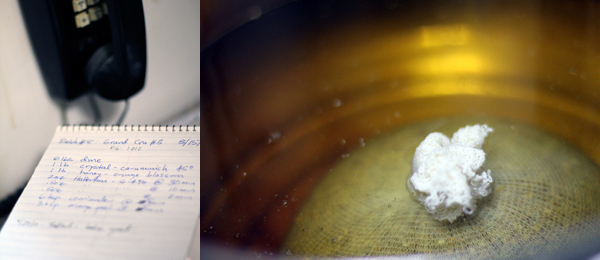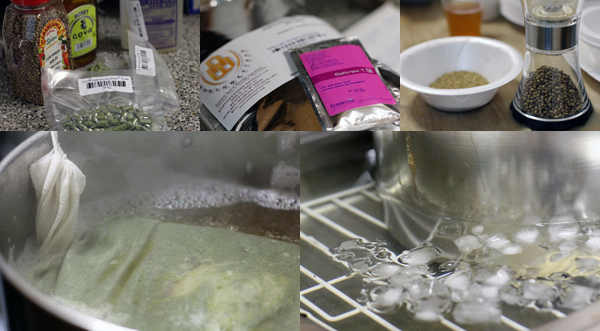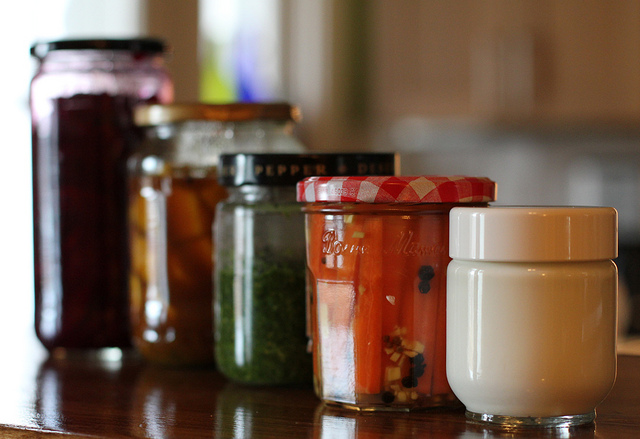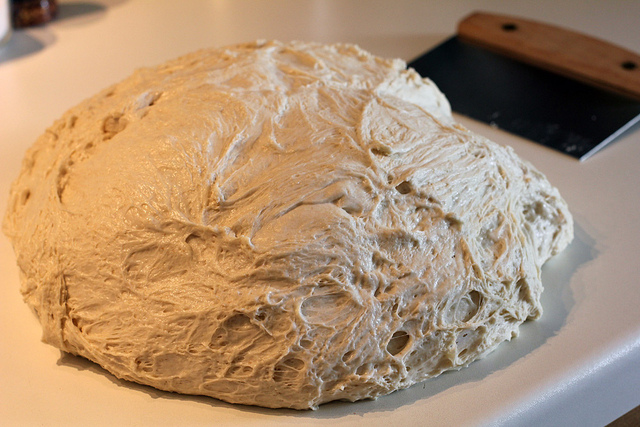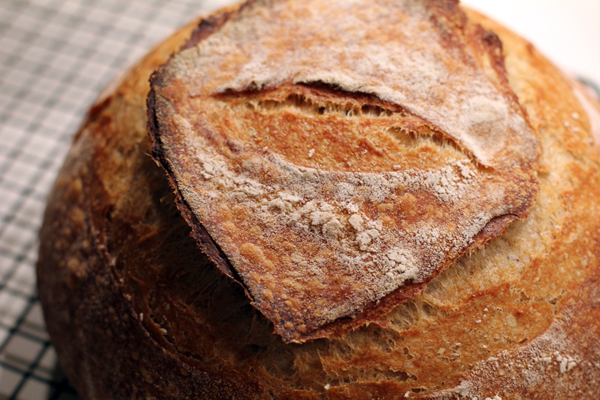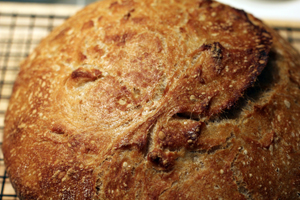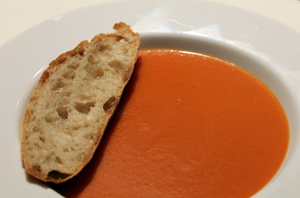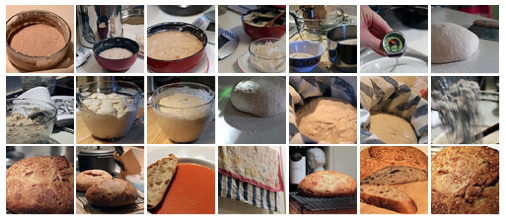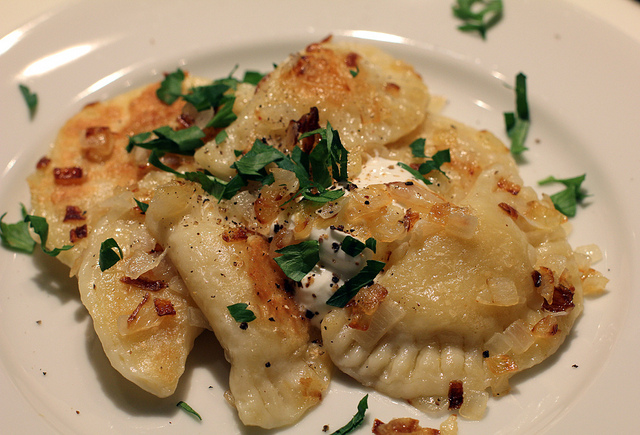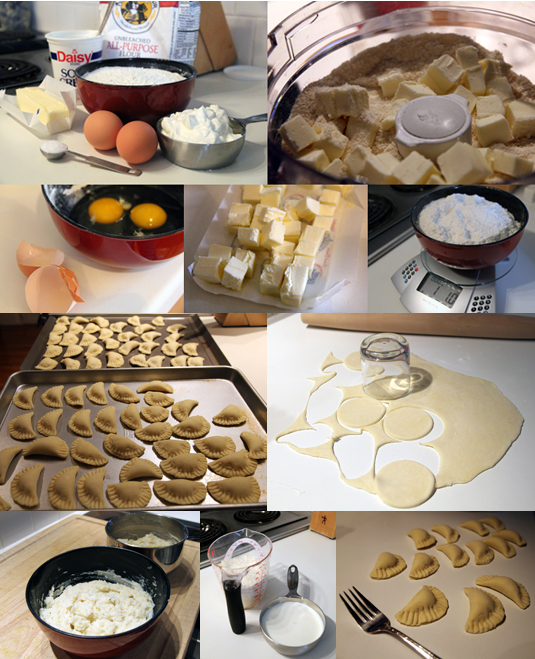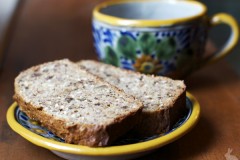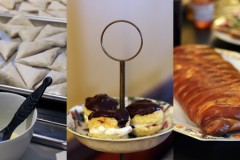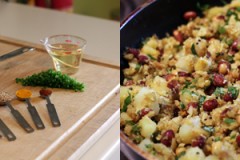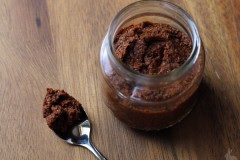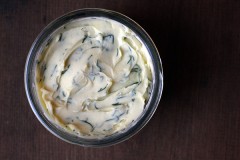In addition to the bread making and the butter churning, this year I have also begun running kitchen experiments in alcohol production. My first batch of strawberry wine was a disappointment–fully attributable to user error, I’m sure–but my subsequent stabs at short mead were much more encouraging. I stumbled on little kits from Ambrosia Farm that included a tea flavoring and a bit of yeast at last year’s Renaissance Fair–just add water and honey! Though I wasn’t expecting much from them other than entertainment, they were actually very tasty. Now I am hooked.
Due to interest (mine) and wrist injury (my friend Scott’s), I had the chance to serve as an apprentice homebrewer last weekend on a 5 gallon batch of beer. We followed the grand cru recipe from “The New Complete Joy of Homebrewing” by Charlie Papazian. Luckily for me, Scott knew exactly what he was doing, as I had not a clue. I am slightly worried to report that I now find this process immensely interesting as well. What can I say: I love food science.
Next up: Kitchen Sake!!

